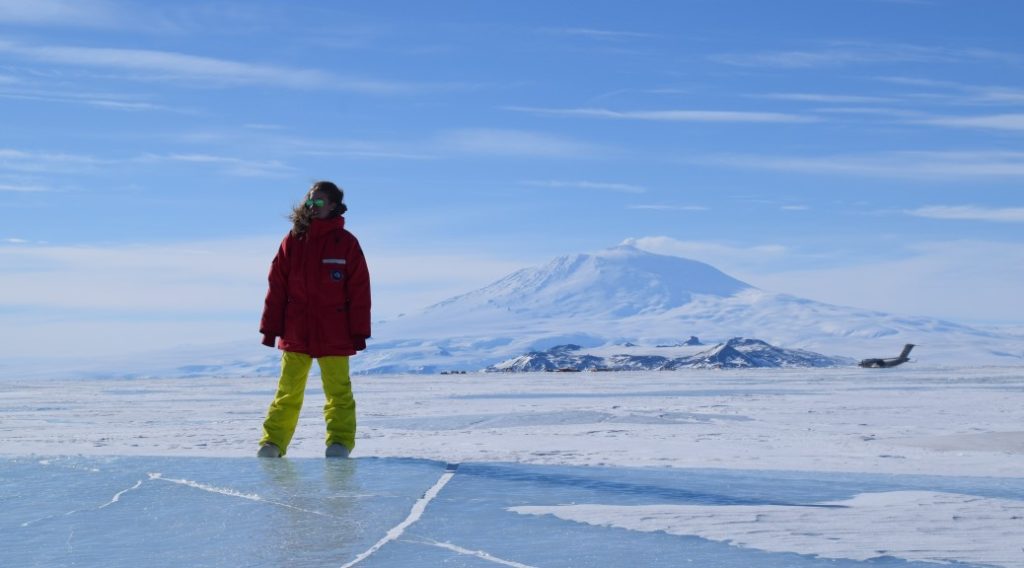Catherine Walker
Past Postdoc, Current Collaborator
JPL/Woods Hole

The main theme of my research is the dynamics of ice, whether it exists on Earth or in space. I was a Postdoctoral Fellow in the Planetary Habitability group at GT, and am now located at JPL/Woods Hole.
On Earth, I focus on the processes that affect the evolution of ice sheets (or ice shells), glaciers and ice shelves and how they interact with external climate forcing and internal structural effects. The main avenue in this regard concerns the mechanics of fracture, rifting, iceberg calving and collapse of ice. These processes likely account for up to two thirds of all ice mass lost from the Earth’s poles to the oceans, a fact that has important implications for future sea level rise. While up until now I have mostly focused on Antarctica’s ice shelves, I am also shifting towards the Arctic and the use of imagery and altimetry over Greenland’s glaciers to improve collapse predictability there. I am the Science PI on a recently-selected Operation IceBridge research proposal that involves using IceBridge data to evaluate the stability of four of Greenland’s glaciers (Rink, Helheim, Jakobshavn, and Kangerdlussuaq). Specifically, I will use imagery and altimetry to determine and compare damage states in glacier ice and proglacial mélange, and apply these observational data to fractal fragmentation and fragment-fabric models to characterize the transition mechanism between intact and de-stabilized glaciers.
I am also interested in using IceBridge and ICESat altimetric data and CryoSat radar data to investigate surface deformation over subsurface water (trapped or ocean). Not only is this an important focus to improve upon our understanding of natural forcing on Earth’s ice, but it is also an important topic in planetary sciences at the moment, as features associated with subsurface water in icy surfaces suggest active geology. Much like my existing decadal-survey work for Antarctica’s rift systems, I look forward to monitoring the changing conditions of Greenland’s glaciers to determine loss and changing stability over time in comparison with external forcings such as air temperature, ocean temperature, etc. I also look forward to continuing modeling work and investigating effects of abnormally high tides and ocean wave impact on the de-stabilization of ice shelf front.
In space, I mainly focus on bringing what we know about these processes in terrestrial ice to the mysterious ice shells of outer planet satellites. With regard to habitability, I am more on the geophysical side of things. I study the overturn of the thick ice shells of these moons, which has significant implications for the existence and maintenance of any possible life there. The timescale and magnitude of ice shell overturn and processes that contribute to the dynamics of the ice itself are the primary targets of my planetary research.
As a continuously curious person, I’ve wandered a little bit on my way to my current research! But, I have always been interested in space! I received my Bachelor’s degree from Mount Holyoke College in Massachusetts in Astronomy and Geology, and then moved to the University of Michigan where I received my Master’s degree in Space Systems Engineering and my Ph.D. in Atmospheric, Oceanic and Space Sciences (glaciology focus). Since my sophomore year in college, I completed seven NASA internships and worked as a visiting scientist at NASA Goddard Space Flight Center in my “gap year” between undergrad and graduate school.
Hopefully, much more to come in the future!